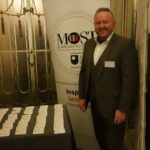To kick off our self-management series ‘Powered by People’, let’s first look at what self-management is.
Self-management is a system of work where manager job roles are either entirely removed or significantly reshaped into more coaching or specialist practitioner roles.
Hence, the ‘self’ bit. We direct ourselves and are not subject to hierarchical control, and people with Executive or Management titles do not have absolute positional ‘power’ or authority.
Semco, Morning Star, Buurtzorg, W L Gore and DaVita Healthcare are some of the biggest self-managed organisations. More recent examples include Bill Anderson, CEO of Bayer, declaring the shift to Dynamic Shared Ownership at the Pharmaceutical and Biotech giant.
Rather than unpack the philosophies of self-management, we want to use this three-part article series to explore key elements of the employee lifecycle and bring self-management practices, principles and approaches to life.
As a glimpse of what we – as authors – believe is an emerging shift in the evolution of work to a more distributed version of power, of decreasing the overt control (influence or interference – we see it more the latter) of manager roles and the associated bureaucracy of always ‘deferring up’.
To more liberated, self-managed people who make aligned decisions and bring fresher and inventive ways to work.
Up first is perhaps logical: Recruitment and selection.
Self-management is a system of work where manager job roles are either entirely removed or significantly reshaped
The merits of shared accountability
How do you divest recruiting decisions away from managers? Ought they not select who joins the team knowing what’s best?
Hold that thought – what about biases? How about people in manager roles being a little too blinkered about hiring a replicant of the previous post-holder? What about that one manager’s lack of capability in culture, chemistry, potential and other hard-to-define elements of a great team?
This isn’t manager bashing. It is, though, shedding light on more inclusive, participative and shared accountability for the most important decision to make: Hiring new colleagues.
We have experience with two types of alternative hiring approaches: from tech and healthcare.
First is the software engineering company Menlo Innovations from Ann Arbor, Michigan.
Menlo Innovations
Menlo has been a managerless environment for decades. Their ‘pair-programming’ (where people work in rotating duos) is one aspect of their unorthodox, self-managed ways, which have been covered in several books and features. Menlo also teaches its way of working to larger, more hierarchical, and mechanistic enterprises.
Their approach to hiring extends the pair programming process into interviews, where candidates collaborate on coding tasks to assess technical skills and the all-important pair and teamwork abilities.
Called ‘extreme interviewing’, Menlo’s process involves unconventional tasks like group activities and role-playing scenarios to evaluate problem solving and cultural alignment.
When interviewing in pairs, their tests aim not to have you, the candidate, score the highest but to increase your working partner’s score.
Menlo’s process involves unconventional tasks like group activities and role-playing scenarios to evaluate problem solving and cultural alignment
A culture of alignment
Key to their hiring strategy is finding candidates who align with Menlo’s self-managed, pair-working, highly collaborative culture, which includes open communication and a drive for quality and innovation.
Diversity and inclusion are paramount to Menlo, which actively promotes a welcoming environment that is especially conducive to working parents.
Candidates are also offered a paid trial period, working on real projects alongside Menlo employees. This allows both parties to assess mutual fit before making final decisions.
Menlo obviously needs qualified engineers, and the most important thing is their ability to work in pairs.
Their team members participate in the interview process, which removes the standard question-and-answer interviews and tests and moves them to simulations that bring that pair-working quality out in those offered trial roles.
What’s the result of this form of hiring? Exponential growth? Huge profits? It’s more about Menlo’s commitment to high-quality software. Menlo has no customer help desk, and ALL software releases work without failure.
Co-founder and Chief Storyteller Rich Sheridan said when his co-founder James Goebel was asked by someone, “What if people fake that kind of interview?” Jim replied, “If they can fake it for 40 hours a week, we’d be ok with that.” Rich and James do not make any hiring decisions; the teams do.
Candidates are also offered a paid trial period, working on real projects alongside Menlo employees
Wellbeing Teams
Next, we look to the UK Health and Social Care sector and Wellbeing Teams from the North-West of England. Founded by Helen Sanderson MBE. They operate as self-managed teams around home-based care and have a values-based approach to recruitment.
Firstly, instead of recruiting to roles, a one-page profile is put together on how people would need to ‘be’ in working in the teams.
This helps open Health and Social Care to people outside the industry with the attributes required to work in human-centred care and an enterprise that matches that.
They deliberately say in their job postings: ‘Please don’t send a CV; we want to know about who you are’ and then ask three questions:
1. As this is a self-managed team, we are curious why this would work for you.
2. We talk about having great days, so what does a great day look like for you?
3. How many miles do you live from the centre of…..<destination of the role>?
Some people send a CV and ignore the final three questions, meaning they are sifted out immediately.
If those questions are sifted in, the candidate is encouraged to have a 20-minute conversation with someone from Wellbeing Teams. Informal, not a selection interview.
Then, if there appears to be a good match, they are invited to a three-hour workshop with a pack (with one-page profiles of the people involved on the day from Wellbeing Teams and their partners) and a thorough application that explains what this involves.
Finding the right match
The workshop day is more like a theatre than an interview process. It includes experiential and searching exercises to assess people’s comfort in scenarios pertinent to the work of Wellbeing Teams. It is a simulator similar to Menlo’s working situation. At the end of the workshop, the candidates are asked to interview Helen, the founder, and other experienced team members.
Candidates are scored throughout the exercises and then reviewed to create job offers for those clearly aligned with what and, most importantly, how Wellbeing Teams works.
Whether successful or not, each candidate receives a survey the evening before the results are known. Then an individual telephone call is made explaining the outcome.
Wellbeing Teams constantly evaluate their recruitment processes using this approach and offer feedback reports to all candidates, whether they are successful or not.
Two hugely unorthodox approaches to hiring in unorthodox organisations. But both are managerless, self-managed organisations.
Next, we look at performance, learning and reward before closing the short series with purpose, culture and belonging.






